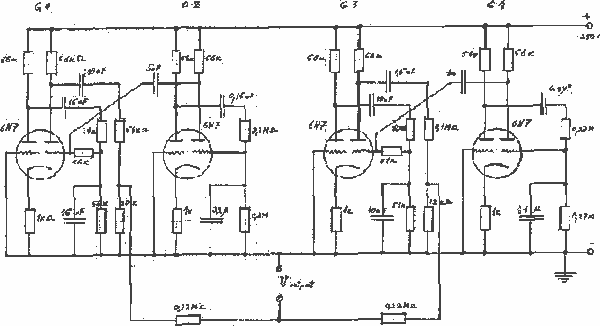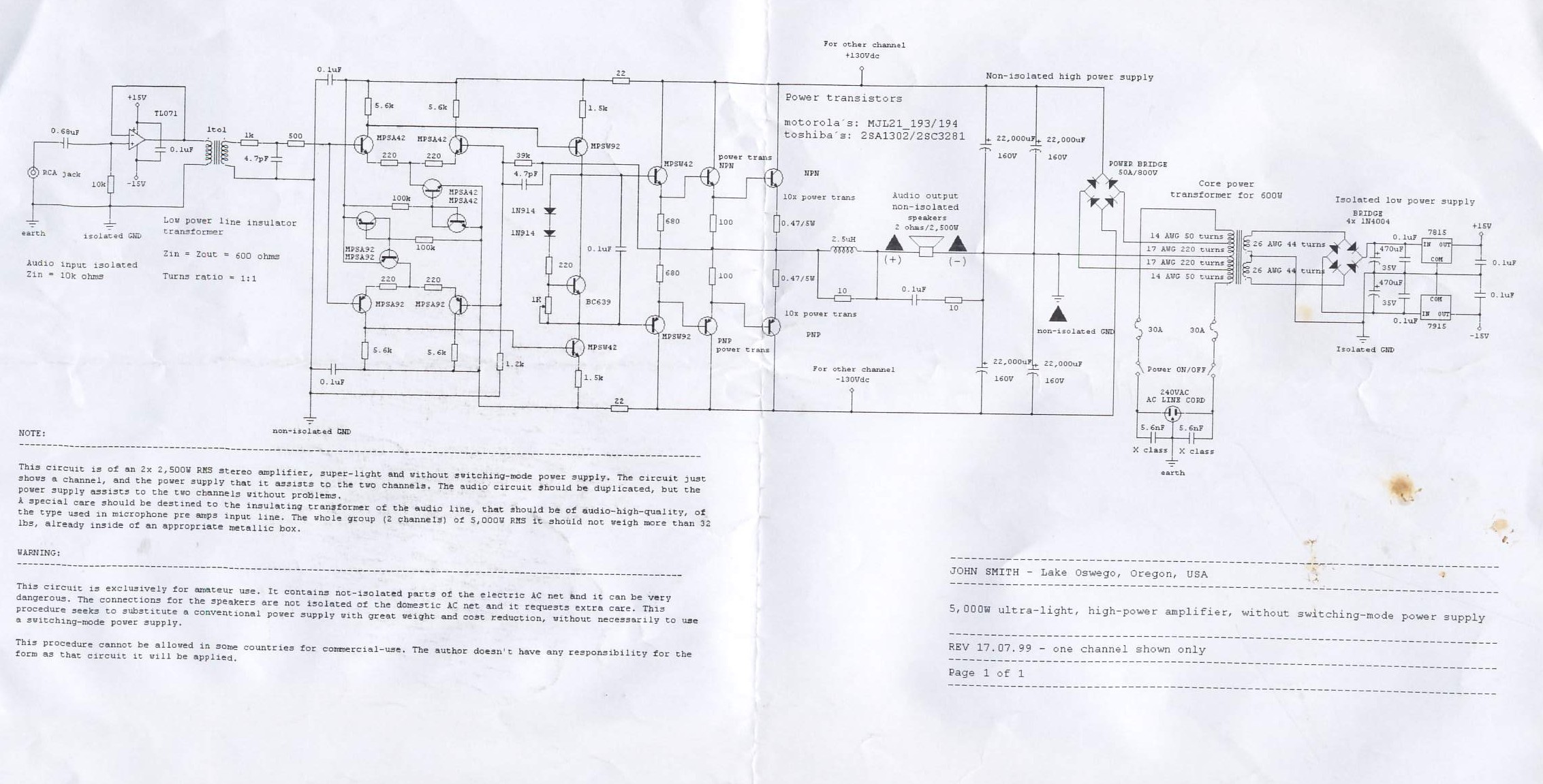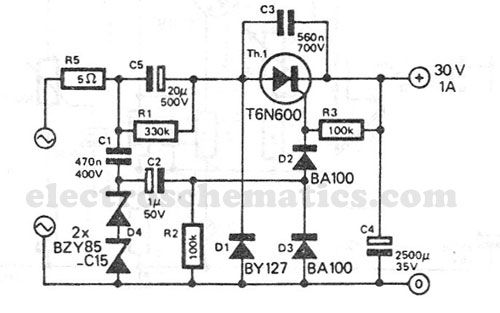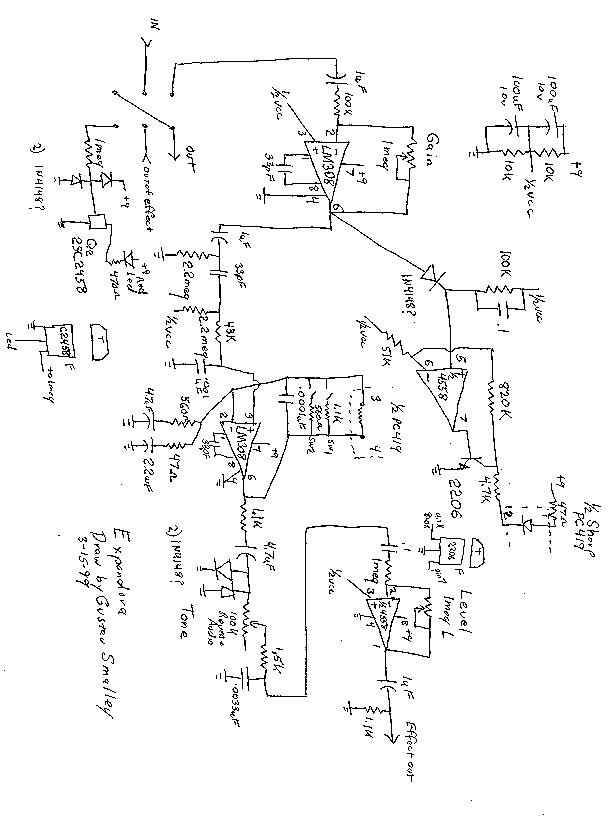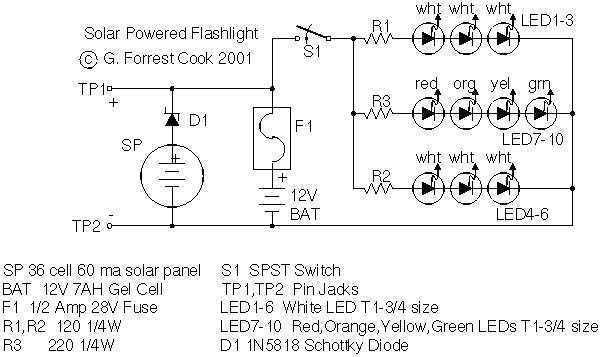
Solar power related schematics
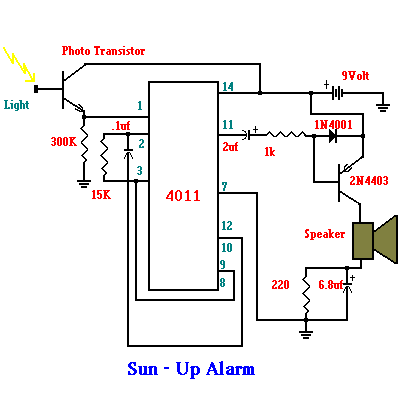
The controller for a Hybrid Power Plant (HPP) block diagram consists of 440 Wp photovoltaic modules, a 1 kW wind turbine, and a 5 kW diesel engine as a backup. The HPP functions as a centralized PV and wind power generation facility, utilizing a battery to store the generated DC current electricity. To address emergencies, a conventional diesel generator is included. The primary component of the HPP is the controller, an electronic device that automatically manages the operation of the backup diesel engine to assist in electricity production. A current meter is employed to measure the current from the solar panel, exhibiting very low power loss for currents in the 0-10A range, and it also serves as a general-purpose DC current meter. The Gate Boost Solar Engine utilizes a 1381, a 2N7000 MOSFET, and a 2N3906 within a unique voltage doubler to enhance the voltage applied to the MOSFET's gate. Maximum Power Point Tracking (MPPT) is an electronic system that ensures the photovoltaic (PV) modules operate at their optimal power output. MPPT adjusts the electrical operating point of the modules to maximize power delivery. Additionally, an MPPT-based lead-acid battery charger is designed for users, focusing on the integration of the MPPT charger circuit. The Photovoltaic Solar Battery Regulator and Load Controller allows solar cell arrays to connect to various battery types without the risk of overcharging, enabling two different electrical loads to be powered from the batteries at varying charge states to optimize power usage. A pyranometer to current converter is designed to build a micropower circuit that transforms low-level DC signals from a pyranometer into DC current for long cable metering, utilizing a TLV2451 rail-to-rail input/output op-amp. The Solar Cell Battery Charger circuit facilitates voltage regulation and isolation when charging lead-acid batteries with a solar cell, particularly effective for solar panels under 100 watts. Solar charger circuits for lead-acid batteries are intended for small and portable applications. A solar energy meter measures the amount of AC energy produced by the photovoltaic power system using a photocoupler attached to an electromechanical energy meter to detect revolutions. The Solar Powered Reading Lamp project aims to create a self-contained reading lamp for students in developing countries to use at night, adaptable for various lighting applications. Solar-powered robots operate solely on light, eliminating the need for batteries, and can be constructed using common electronic components. The Sun-Up Alarm can provide an audible alert when the sun rises or detect light in dark areas, functioning as a light beam detector. An application note discusses generating a 5V supply voltage from low-voltage solar cell power using a two-stage, high-efficiency MAX866 step-up DC-DC converter.
The Hybrid Power Plant (HPP) controller operates as the central management unit for the integration of renewable energy sources, specifically photovoltaic and wind energy, alongside a diesel backup system. The 440 Wp photovoltaic modules convert sunlight into electrical energy, while the 1 kW wind turbine harnesses wind energy, contributing to the overall power generation. The 5 kW diesel engine serves as a backup to ensure reliability during periods of low renewable energy generation or high demand.
The controller's functionality includes real-time monitoring and control of power production and consumption, ensuring that energy is efficiently stored in batteries for later use. The current meter is critical for monitoring the output from the solar panels, providing feedback that allows the controller to optimize the system's performance. The low power loss associated with the current meter ensures accurate readings without significantly affecting the overall efficiency of the power generation system.
The Gate Boost Solar Engine is an innovative circuit that enhances the operation of the MOSFET, increasing its efficiency and performance within the system. By employing a voltage doubler configuration, the gate voltage applied to the MOSFET is elevated, improving switching characteristics and overall power management.
The implementation of MPPT technology is vital for maximizing the energy harvested from the PV modules. By continuously adjusting the electrical operating point, the MPPT system ensures that the modules operate at their maximum power output, adapting to changing environmental conditions such as sunlight intensity and temperature.
The integration of a photovoltaic solar battery regulator and load controller allows the system to manage battery charging and discharging effectively. This device safeguards against overcharging and facilitates the connection of various battery types, ensuring compatibility and safety.
The pyranometer to current converter and the solar cell battery charger circuit further enhance the system's capabilities, enabling accurate measurement and efficient battery charging. The solar energy meter provides valuable data on energy production, contributing to system efficiency analysis and optimization.
Overall, the HPP design incorporates advanced electronic components and systems to create a robust, efficient, and reliable renewable energy generation and management solution, addressing both sustainability and energy security needs.Controller for Hybrid Power Plant block diagram of the HPP, comprised of 440 Wp photovoltaic modules, 1 kW wind turbine and 5 kW diesel engine as a back-up. HPP is a centralized PV and wind power generation plant, using battery to store the produced dc current electricity.
To cater for emergencies, a conventional diesel generator is also provided. The main component on HPP is the controller, an electronic device which automatically control when the back-up diesel engine shall start assisting with producing electricity Current meter used to measure the current from a solar panel. It has very low power loss for currents in the 0-10A range. It also works as a general purpose DC current meter Gate Boost Solar Engine The Gate Boost SE uses a 1381, a 2N7000 MOSFET and a 2N3906 with a unique voltage doubler to increase the voltage applied to the gate of the MOSFET.
MPPT Maximum Power Point Tracking, frequently referred to as MPPT, is an electronic system that operates the Photovoltaic (PV) modules in a manner that allows the modules to produce all the power they are capable of. MPPT is not a mechanical tracking system that physically moves the modules to make them point more directly at the sun, MPPT Charger circuit, pdf file MPPT Charger This application report is intended for users designing an MPPT-based lead acid battery charger with the battery charger, MPPT Charger circuit, pdf file MPPT Solar Charge Controller Maximum power point tracking, referred to as MPPT, is an electronic system that operates the photovoltaic modules to produce maximum power.
MPPT varies the electrical operating point of the modules and enables them to deliver maximum available power, pdf file Photovoltaic Solar Battery Regulator and Load Controller This device allows solar cell arrays to be connected to either conventional lead-acid, sealed lead-acid, or lithium storage batteries without fear of overcharging. It allows two different electrical loads to be driven from the batteries at two different charge states to maximise power usage efficiency Pyranometer to Current Converter Build a micropower circuit that converts low level DC signal from pyranometer to DC current for long cable metering.
The circuit was built with TLV2451, rail-to-rail input/output opamp made by TI Solar Cell Battery Charger This Circuit will allow for Voltage Regulation and Isolation when Charging Lead Acid Batteries with a Solar Cell. This Circuit will be most useful for Solar Panals of less than 100 watts, and when using a suitable transistor in it, Solar Cell Circuits Solar charger for lead-acid batteries This circuit is intended for charging sealed lead-acid batteries with a solar panel in small and portable applications Solar energy meter The meter measures amount of AC energy produced by photovoltaic power system.
It uses photocoupler attach to electromechanical energy meter to detect the number of revolution, Solar energy meter Solar Powered Reading Lamp The goal of this project is to produce a self contained reading lamp that could be used by students in developing countries for reading at night. The circuit can be used for a wide variety of lighting applications Solar robots The fallowing robots are powered only by light, which means no batteries are required.
Make your own solar powered robot at home using things you probably already have. Transistors, resistor, capacitor, solar battery and flashing LED are available at any electronic store Sun-Up Alarm The Sun - Up Alarm can be used to provide a audible alarm for when the sun comes up or it can be used in a dark area and detect when a light comes on. It can also be used to detect a light beam, headlights etc, . , Light intensity sensor, Educypedia Supply Generates 5V from Low-Voltage Solar-Cell Power This application note describes generating 5V supply voltage from very low input voltage of solar cells.
Two stage, high efficiency, MAX866 step-up DC-DC con 🔗 External reference
The Hybrid Power Plant (HPP) controller operates as the central management unit for the integration of renewable energy sources, specifically photovoltaic and wind energy, alongside a diesel backup system. The 440 Wp photovoltaic modules convert sunlight into electrical energy, while the 1 kW wind turbine harnesses wind energy, contributing to the overall power generation. The 5 kW diesel engine serves as a backup to ensure reliability during periods of low renewable energy generation or high demand.
The controller's functionality includes real-time monitoring and control of power production and consumption, ensuring that energy is efficiently stored in batteries for later use. The current meter is critical for monitoring the output from the solar panels, providing feedback that allows the controller to optimize the system's performance. The low power loss associated with the current meter ensures accurate readings without significantly affecting the overall efficiency of the power generation system.
The Gate Boost Solar Engine is an innovative circuit that enhances the operation of the MOSFET, increasing its efficiency and performance within the system. By employing a voltage doubler configuration, the gate voltage applied to the MOSFET is elevated, improving switching characteristics and overall power management.
The implementation of MPPT technology is vital for maximizing the energy harvested from the PV modules. By continuously adjusting the electrical operating point, the MPPT system ensures that the modules operate at their maximum power output, adapting to changing environmental conditions such as sunlight intensity and temperature.
The integration of a photovoltaic solar battery regulator and load controller allows the system to manage battery charging and discharging effectively. This device safeguards against overcharging and facilitates the connection of various battery types, ensuring compatibility and safety.
The pyranometer to current converter and the solar cell battery charger circuit further enhance the system's capabilities, enabling accurate measurement and efficient battery charging. The solar energy meter provides valuable data on energy production, contributing to system efficiency analysis and optimization.
Overall, the HPP design incorporates advanced electronic components and systems to create a robust, efficient, and reliable renewable energy generation and management solution, addressing both sustainability and energy security needs.Controller for Hybrid Power Plant block diagram of the HPP, comprised of 440 Wp photovoltaic modules, 1 kW wind turbine and 5 kW diesel engine as a back-up. HPP is a centralized PV and wind power generation plant, using battery to store the produced dc current electricity.
To cater for emergencies, a conventional diesel generator is also provided. The main component on HPP is the controller, an electronic device which automatically control when the back-up diesel engine shall start assisting with producing electricity Current meter used to measure the current from a solar panel. It has very low power loss for currents in the 0-10A range. It also works as a general purpose DC current meter Gate Boost Solar Engine The Gate Boost SE uses a 1381, a 2N7000 MOSFET and a 2N3906 with a unique voltage doubler to increase the voltage applied to the gate of the MOSFET.
MPPT Maximum Power Point Tracking, frequently referred to as MPPT, is an electronic system that operates the Photovoltaic (PV) modules in a manner that allows the modules to produce all the power they are capable of. MPPT is not a mechanical tracking system that physically moves the modules to make them point more directly at the sun, MPPT Charger circuit, pdf file MPPT Charger This application report is intended for users designing an MPPT-based lead acid battery charger with the battery charger, MPPT Charger circuit, pdf file MPPT Solar Charge Controller Maximum power point tracking, referred to as MPPT, is an electronic system that operates the photovoltaic modules to produce maximum power.
MPPT varies the electrical operating point of the modules and enables them to deliver maximum available power, pdf file Photovoltaic Solar Battery Regulator and Load Controller This device allows solar cell arrays to be connected to either conventional lead-acid, sealed lead-acid, or lithium storage batteries without fear of overcharging. It allows two different electrical loads to be driven from the batteries at two different charge states to maximise power usage efficiency Pyranometer to Current Converter Build a micropower circuit that converts low level DC signal from pyranometer to DC current for long cable metering.
The circuit was built with TLV2451, rail-to-rail input/output opamp made by TI Solar Cell Battery Charger This Circuit will allow for Voltage Regulation and Isolation when Charging Lead Acid Batteries with a Solar Cell. This Circuit will be most useful for Solar Panals of less than 100 watts, and when using a suitable transistor in it, Solar Cell Circuits Solar charger for lead-acid batteries This circuit is intended for charging sealed lead-acid batteries with a solar panel in small and portable applications Solar energy meter The meter measures amount of AC energy produced by photovoltaic power system.
It uses photocoupler attach to electromechanical energy meter to detect the number of revolution, Solar energy meter Solar Powered Reading Lamp The goal of this project is to produce a self contained reading lamp that could be used by students in developing countries for reading at night. The circuit can be used for a wide variety of lighting applications Solar robots The fallowing robots are powered only by light, which means no batteries are required.
Make your own solar powered robot at home using things you probably already have. Transistors, resistor, capacitor, solar battery and flashing LED are available at any electronic store Sun-Up Alarm The Sun - Up Alarm can be used to provide a audible alarm for when the sun comes up or it can be used in a dark area and detect when a light comes on. It can also be used to detect a light beam, headlights etc, . , Light intensity sensor, Educypedia Supply Generates 5V from Low-Voltage Solar-Cell Power This application note describes generating 5V supply voltage from very low input voltage of solar cells.
Two stage, high efficiency, MAX866 step-up DC-DC con 🔗 External reference
